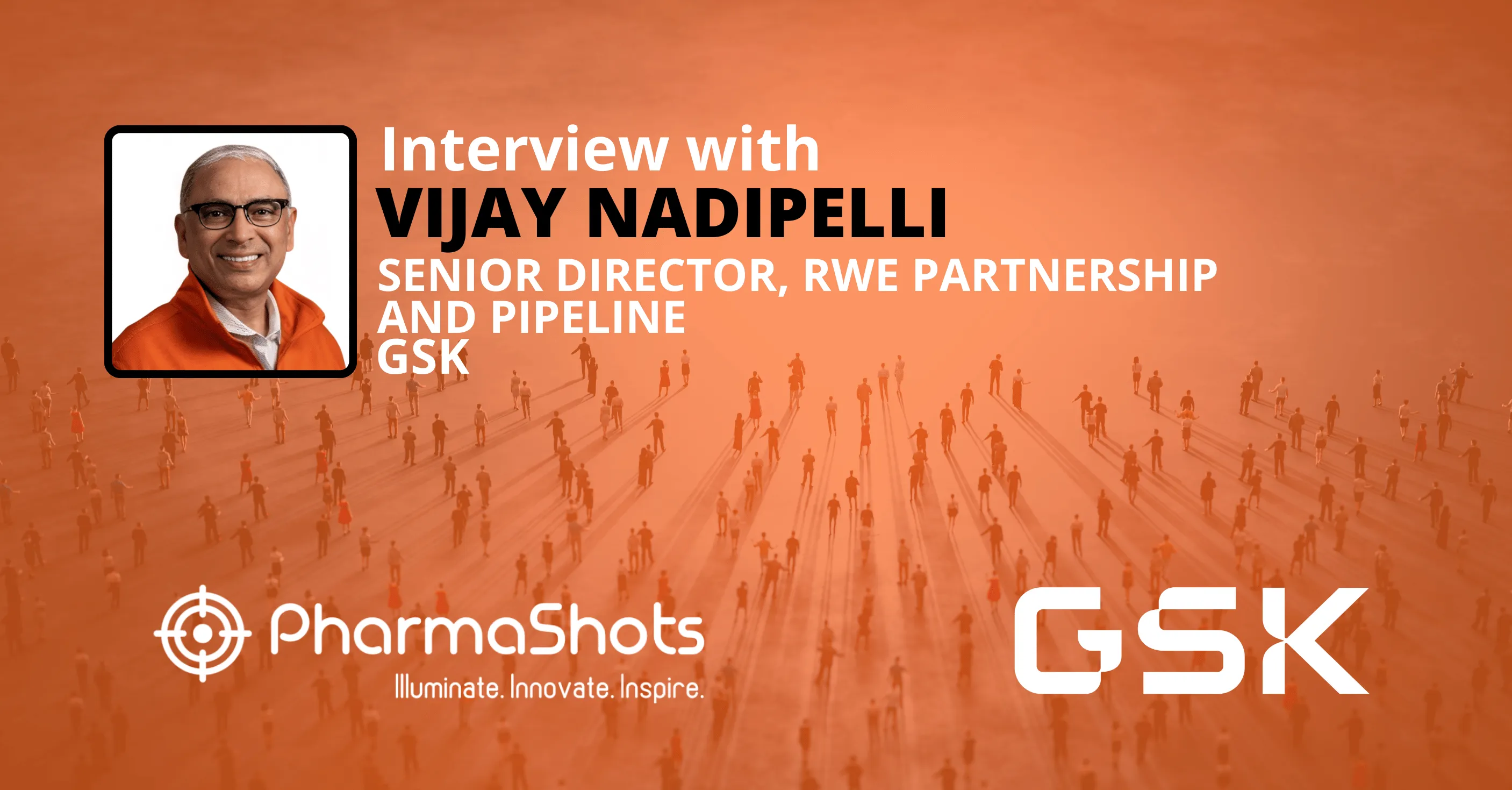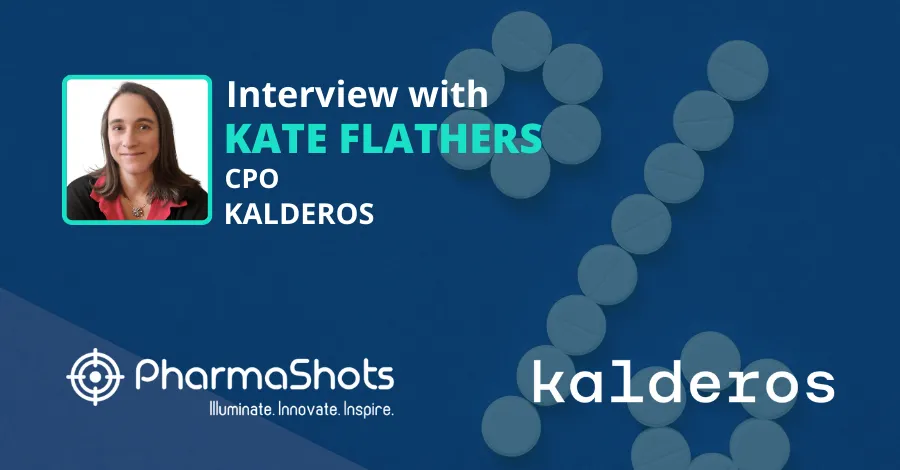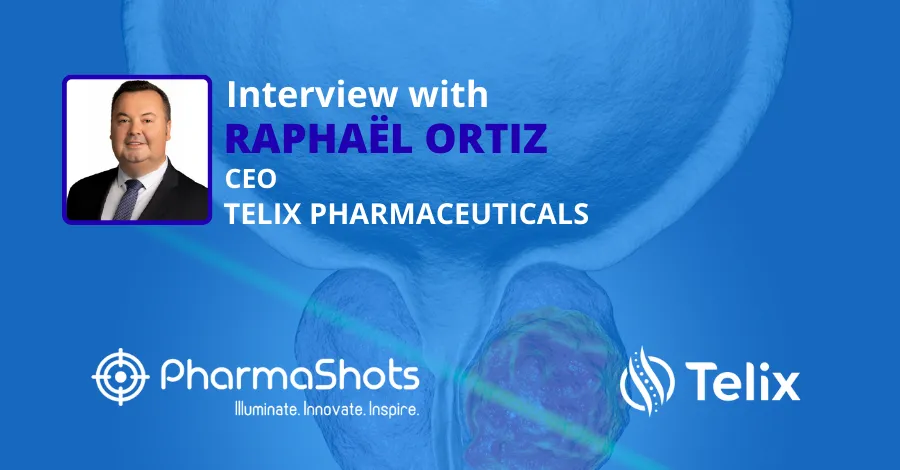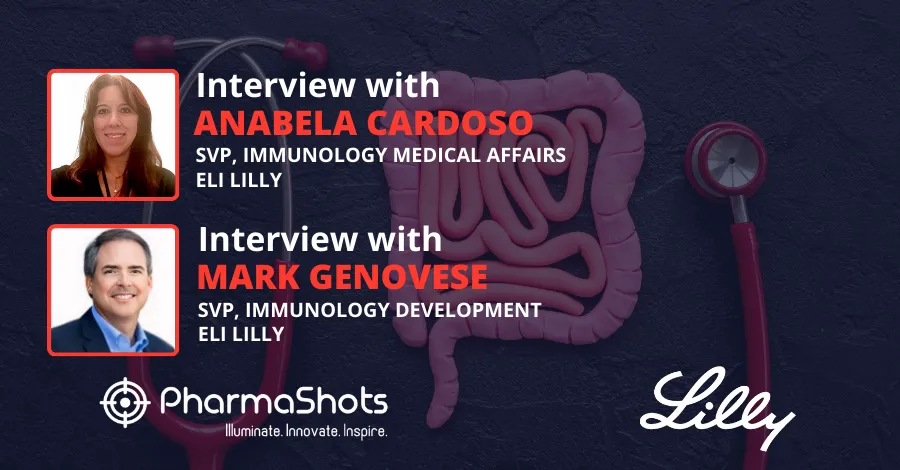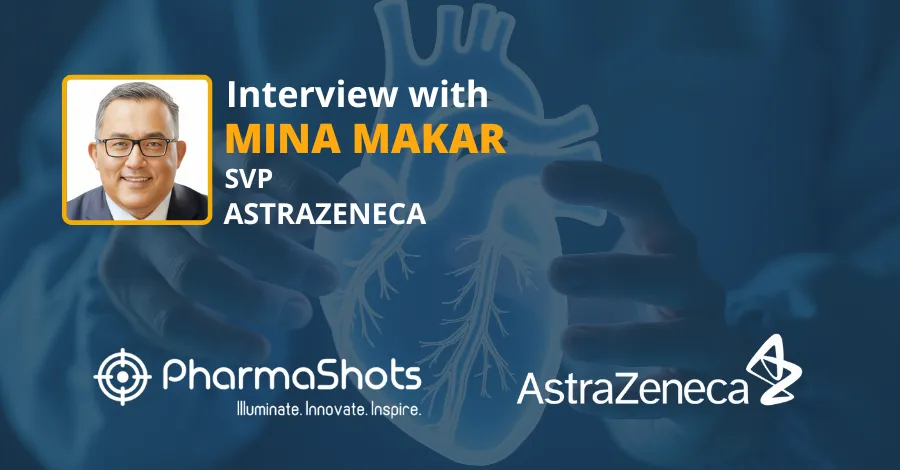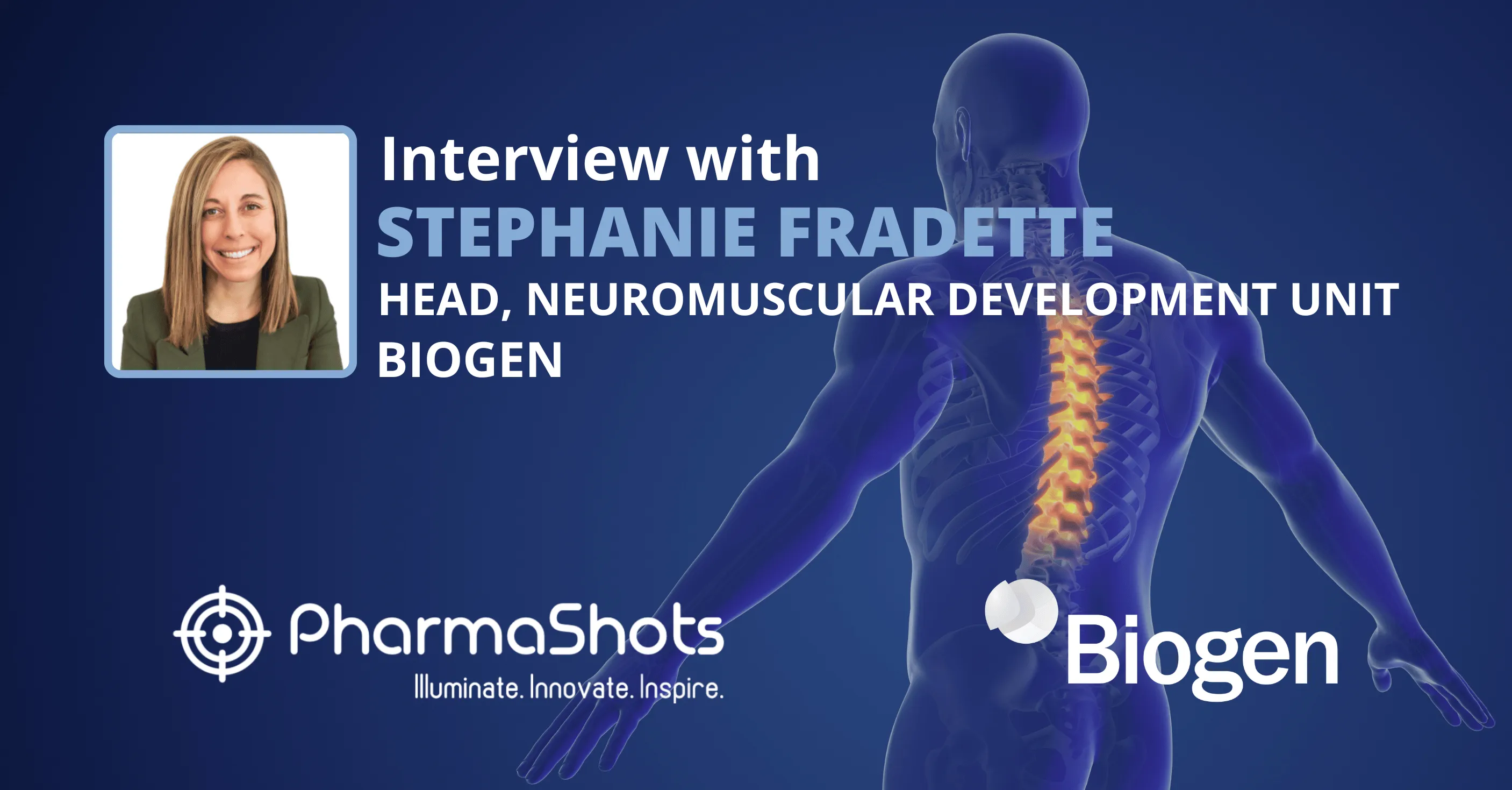
PharmaShots Interview: Takeda Salom Juethner Shares Insights on the Data Publication to Support the Sustained Safety and Efficacy of Takhzyro
In an interview with PharmaShots, Salomé Juethner, Senior Medical Director, Rare Diseases at Takeda shared her views on the P-III HELP study of Takhzyro for the prevention of hereditary angioedema attacks in the Journal Allergy
Shots:
- The P-III HELP OLE study evaluates the safety & efficacy of Takhzyro (300mg, q2w) in 212 patients aged =12yrs. with HAE attacks for ~2.5yrs.
- The results showed an 87.4% mean reduction in attack rate compared to baseline; attacks requiring acute treatment (93.4%); mod. or sev. attacks (84.3%); HAE attack-free (97.7%) with a duration of the attack-free period (14.8mos.), 68.9% experienced an attack-free period of 12+ mos.
- The safety profile was consistent with the original findings from the HELP Study with TEAEs occurring in 54.7% of patients. Takhzyro is a mAb targeting plasma kallikrein activity, indicated for HAE attacks in patients aged =12 yrs.
Tuba: Can you shed light on Hereditary Angioedema? Discuss its epidemiology?
Salomé Juethner: Hereditary angioedema (HAE) is a rare genetic disorder that results in recurring attacks of edema 'swelling' in various parts of the body, including the abdomen, face, feet, genitals, hands, and throat. The swelling can be debilitating and painful.[i],[ii],[iii]
Attacks that obstruct the airways can cause asphyxiation and are potentially life-threatening. [iv],[v]
HAE affects an estimated 1 in 50,000 people worldwide. It is often under-recognized, under-diagnosed and under treated.[vi],[vii],[viii]
Typically, people with HAE are either missing an important protein in their blood called C1 esterase inhibitor (C1-INH), or it doesn't work the way it should. [ix]
When there is a C1-INH deficiency, or C1-INH isn't working properly, a cascade of events occurs. Part of this cascade is the increased activity of another protein called plasma kallikrein. Normally, C1-INH helps to regulate plasma kallikrein. When there is not enough functioning C1-INH, the activity of plasma kallikrein increases. Too much plasma kallikrein activity triggers the release of bradykinin. Increased bradykinin levels cause blood vessels to release fluid and result in the localized swelling and pain of an HAE attack. [x]
Children have a 50% chance of inheriting HAE if one of their parents has the condition. However, up to 25% of HAE cases result from a spontaneous change within the C1 esterase inhibitor gene at conception. Symptoms of HAE usually appear in childhood, most often by age 13, and may become more severe after puberty. [xi]
Tuba: Describe the design of the HELP study and the significance of its results.
Salomé Juethner: The HELP (Hereditary Angioedema Long-term Prophylaxis) Study Open-label Extension (OLE) is an evaluation of the long-term safety and efficacy of TAKHZYRO in HAE patients of at least 12 years of age and older.
Two hundred and twelve patients received treatment with TAKHZYRO at the start of the OLE Study (109 rollover patients originally evaluated in the HELP Study and who continued into the OLE, and 103 eligible patients who did not participate in the HELP Study but who had experienced at least one attack in the last 12 weeks). The 109 rollover patients represent 96.5% of the patients who completed the initial HELP Study, highlighting great retention going into the OLE study. [xii]
Rollover patients received a dose of 300 mg TAKHZYRO on Day 0 and then every two weeks after their first attack. Non-rollover patients were treated with one 300 mg dose every two weeks, beginning on Day 0. The majority of patients (92.5 percent; N=196) completed at least 12 months in the study, and 81.6 percent (N=173) completed at least 30 months.
The OLE study results show that preventative treatment with TAKHZYRO markedly reduced the frequency of HAE attacks by 87.4 percent overall compared to baseline in patients 12 years of age and older who received treatment for a mean duration of almost 2.5 years (29.6 months; 8.2 standard deviations). [xiii]
Additionally, the treatment satisfaction scores recorded on day 364 and at the end of the study showed that patients were very satisfied with treatment effectiveness, found the treatment to be convenient, and were overall very satisfied with TAKHZYRO.[xiv]
These results help to further our understanding of the potential of TAKHZYRO in preventing attacks in the long term with continued treatment and adds to the growing body of clinical evidence that supports the use of TAKHZYRO as a preferred long-term preventative treatment option for those living with HAE.
Tuba: Describe the key features of Takhzyro (lanadelumab) and how it works in the treatment of rare diseases.
Salomé Juethner: TAKHZYRO is a first-of-its-kind fully human monoclonal antibody that specifically binds and decreases plasma kallikrein and is indicated for prophylaxis to prevent HAE attacks in patients 12 years and older.
TAKHZYRO is a subcutaneous injection that can be self-injected once every two weeks after being trained. The recommended starting dose is 300 mg every 2 weeks. A dosing interval of 300 mg every 4 weeks is also effective and may be considered if the patient is well-controlled (e.g., attack-free) for more than 6 months. [xv][xvi]
Analysis suggests that TAKHZYRO is a well-tolerated treatment that prevented HAE attacks over an extended planned 2.5 year treatment period across specific HAE patient demographics and disease characteristic subgroups. [xvii]
Hereditary angioedema is a lifelong condition and research shows that concerns about another attack can limit the way patients lead their lives. The painful, unpredictable, and potentially life-threatening nature of an HAE swelling attack is the primary burden patients experience from HAE. The efficacy of TAKHZYRO to prevent HAE attacks over the long term will be an important consideration for patients and physicians as they develop a management plan for patients that is focused on reducing the number of HAE attacks. Thus, decreasing the burden of disease for individuals living with HAE.
Tuba: Were there any obstacles you faced while conducting during P-III HELP? What were they and how did you overcome them?
Salomé Juethner: The Phase 3 HELP Study OLE is the largest study conducted to date in patients with HAE-1/2, with 212 patients receiving treatment. TAKHZYRO was approved for use by the FDA during the trial, resulting in 117 patients who discontinued the study transitioning to the commercial product when it became available. However, importantly, the majority of patients were exposed to lanadelumab treatment for an extended period (81.6 percent of patients completed =30 months in the study). Inclusion of both rollover and non-rollover patients allowed for the evaluation of safety and effectiveness of lanadelumab in a more varied HAE population, with non-rollover patients more closely mimicking the real-world setting about a broader baseline attack rate and prior use of long-term prophylaxis agents. [xviii]
When the primary HELP study was initiated, patients were eager to participate in the trial which allowed the study to move from enrollment initiation to completion in just over a year. Of the patients enrolled in the initial HELP study, nearly 97 percent chose to enroll in the long-term OLE study. The OLE study also completed enrollment quickly and retained nearly 82 percent of patients through at least 30 months. The commitment shown by patients across the HELP OLE studies is one reason it was such a successful trial.
Tuba: Discuss the role of AE-QoL in the P-III HELP study.
Salomé Juethner: Exploratory analyses evaluated outcomes related to the attack-free period, including the number of attack-free days, percentage of patients who were attack-free during the treatment period, and duration of the attack-free period. The validated Angioedema Quality of Life Questionnaire (AE-QoL) was among the patient-reported outcome tools used to evaluate patients quality of life (QoL) and the long-term benefit of lanadelumab from the patient's perspective. This symptom-specific QoL questionnaire measures four dimensions (functioning, fatigue/mood, fears/shame, nutrition) with a total of 17 items. Scores range from 0 to 100' the higher the score, the greater the QoL impairment. The minimal clinically important difference for the AE-QoL total score is defined as a change of 6 points. [xix]
Both rollovers and non-rollovers achieved the minimal clinically important difference for the AE-QoL total score: the mean (SD) change in total score from baseline was '10.2 (17.9) and '19.5 (21.3) for rollovers and non-rollovers, respectively. Most of the improvements in AE-QoL scores were observed during the early follow-up period (from day 0 to 56), before reaching a plateau, and scores were generally maintained during subsequent visits. [xx]
Another tool used to collect patient-reported outcomes was the Treatment Satisfaction Questionnaire for Medication (TSQM-9). The TSQM-9 is a validated generic 9-item measure of treatment satisfaction. It assesses the patient perception of 3 domains (treatment effectiveness, convenience, and global satisfaction) during the last 2-3 weeks or since treatment was last used. Scores for this also range from 0-100, with higher scores indicating greater satisfaction with treatment. The OLE TSQM-9 findings showed that mean scores on day 364 and at the end of the study showed that rollover and non-rollover patients were very satisfied with treatment effectiveness (scores were >90), perceived that the treatment was convenient (scores >81), and was very satisfied with TAKHZYRO (scores were >88). [xxi]
Takeda's corporate philosophy is focused on an unwavering commitment to putting patients first, which always guides our scientific discovery and excellence and helps us in our pursuit to address unmet medical needs. The Phase 3 HELP Study OLE data underscores our commitment to patients, and the improvements in treatment satisfaction motivate our teams to continue working towards solutions for additional patient needs.
Tuba: What's next for Takhzyro?
Salomé Juethner: Takeda is committed to continuing to raise treatment expectations for all people living with HAE who are looking for a brighter future with fewer HAE attacks. It is our priority to help ensure that individuals living with HAE have uninterrupted access to the medicines they rely on. As long-term preventative therapy becomes the standard of care for people living with HAE, we will continue to support individuals at every step of their journey and strive to empower more people to find freedom from HAE attacks.
For more than a decade, Takeda has listened to the HAE community to further understand the need for long-term, highly effective preventative therapies and have committed our resources to develop treatment options. These analyses further assert the important role TAKHZYRO can play in the lives of people who live with HAE.
Tuba: What made you decide to work on this rare disease? Are you working on any other rare diseases as well?
Salomé Juethner: HAE, like so many other rare diseases, is highly complex, and patients, their families, and caregivers often undergo years of strain trying to understand their disease, get a definitive diagnosis and gain access to the medicines they need.
At Takeda, we are committed to being a champion for the patients we serve. Every individual living with HAE is unique and by listening and reacting to their needs, we translate the insights we gain into innovative solutions from diagnosis to ongoing management.
Advancing science is crucial to the way we operate, and we are bold in our mission to accelerate diagnosis and develop treatments that will make a difference to the lives of HAE patients, their support networks, and those medical professionals who care for them.
Takeda aspires to transform the treatment of rare diseases in immunology, hematology, metabolic and lysosomal storage disorders, and cytomegalovirus in transplant. To read more about some of the rare conditions Takeda is focused on, visit our website: https://www.takeda.com/what-we-do/areas-of-focus/rare-diseases/.
Tuba: As there are multiple approved therapies for the disease, how Takhzyro is different from the other available options?
Salomé Juethner: TAKHZYRO is the only monoclonal antibody approved to prevent HAE attacks. TAKHZYRO is not created from human plasma donations. TAKHZYRO's recommended dose is every 2 weeks, and a dosing interval of once a month is also effective and may be considered if the patient and their doctor agree they are well-controlled (e.g., attack free for more than 6 months).
The safety and efficacy of TAKHZYRO were assessed in one of the largest randomized, controlled prevention studies in HAE, with the longest treatment duration to date and a high retention rate of study participants.
Effective prevention backed by clinical evidence is critical for healthcare professionals who treat patients with HAE. The potential to be attack-free for periods, sometimes up to 12 months in clinical trials, may be especially appealing for those living with this chronic and unpredictable disease.
References:
- [1] Cicardi M, Bork K, Caballero T, et al; on behalf of HAWK (Hereditary Angioedema International Working Group). Evidence-based recommendations for the therapeutic management of angioedema owing to hereditary C1 inhibitor deficiency: consensus report of an International Working Group. Allergy. 2012; 67(2):147-157.
- [1] Zuraw BL. Hereditary angioedema. N Engl J Med. 2008;359(10):1027-1036.
- [1] Banerji A. The burden of illness in patients with hereditary angioedema. Ann Allergy Asthma Immunol. 2013;111(5):329-336.
- [1] Banerji A. The burden of illness in patients with hereditary angioedema. Ann Allergy Asthma Immunol. 2013;111(5):329-336.
- [1] Longhurst HJ, Bork K. Hereditary angioedema: causes, manifestations, and treatment. Br J Hosp Med. 2006;67(12):654-657.
- [1] Cicardi M, Bork K, Caballero T, et al; on behalf of HAWK (Hereditary Angioedema International Working Group). Evidence-based recommendations for the therapeutic management of angioedema owing to hereditary C1 inhibitor deficiency: consensus report of an International Working Group. Allergy. 2012; 67(2):147-157.
- [1] Banerji A. The burden of illness in patients with hereditary angioedema. Ann Allergy Asthma Immunol. 2013;111(5):329-336.
- [1] Longhurst HJ, Bork K. Hereditary angioedema: causes, manifestations, and treatment. Br J Hosp Med. 2006;67(12):654-657.
- [1] DiscoverHAE. Hereditary Angioedema Causes. https://www.discoverhae.com/hereditary-angioedema-causes. Accessed August 25, 2021.
- [1] DiscoverHAE. Hereditary Angioedema Causes. https://www.discoverhae.com/hereditary-angioedema-causes. Accessed August 25, 2021.
- [1] U.S. Hereditary Angioedema Association. What is HAE? https://www.haea.org/pages/p/what_is_hae. Accessed August 25, 2021.
- [1] Banerji A, Bernstein JA, Johnston DT, et al; for HELP OLE Investigators. Long-term prevention of hereditary angioedema attacks with lanadelumab: the HELP OLE Study. Allergy. 2021 Jul 21. doi: 10.1111/all.15011. Epub ahead of print.
- [1] Banerji A, Bernstein JA, Johnston DT, et al; for HELP OLE Investigators. Long-term prevention of hereditary angioedema attacks with lanadelumab: the HELP OLE Study. Allergy. 2021 Jul 21. doi: 10.1111/all.15011. Epub ahead of print.
- [1] Lumry WR, Maurer M, Megerl M, et al; for the HELP OLE Study Investigators. Long-term Lanadelumab Treatment Improves Health-related Quality of Life: HELP Open-label Extension Study Interim Findings. ACAAI 2019. Abstract #P156.
- [1] TAKHZYRO® (lanadelumab) European Summary of Product Characteristics.
- [1] Cicardi M, Bork K, Caballero T, et al; on behalf of HAWK (Hereditary Angioedema International Working Group). Evidence-based recommendations for the therapeutic management of angioedema owing to hereditary C1 inhibitor deficiency: consensus report of an International Working Group. Allergy. 2012; 67(2):147-157.
- [1] Maurer M, Bernstein J, et al. Long-term prevention of attacks with lanadelumab across subgroups of patients with hereditary angioedema (HAE): final results from the HELP open-label extension study. EAACI 2021.
- [1] Banerji A, Bernstein JA, Johnston DT, et al; for HELP OLE Investigators. Long-term prevention of hereditary angioedema attacks with lanadelumab: the HELP OLE Study. Allergy. 2021 Jul 21. doi: 10.1111/all.15011. Epub ahead of print.
- [1] Banerji A, Bernstein JA, Johnston DT, et al; for HELP OLE Investigators. Long-term prevention of hereditary angioedema attacks with lanadelumab: the HELP OLE Study. Allergy. 2021 Jul 21. doi: 10.1111/all.15011. Epub ahead of print.
- [1] Banerji A, Bernstein JA, Johnston DT, et al; for HELP OLE Investigators. Long-term prevention of hereditary angioedema attacks with lanadelumab: the HELP OLE Study. Allergy. 2021 Jul 21. doi: 10.1111/all.15011. Epub ahead of print.
- [1] Banerji A, Bernstein JA, Johnston DT, et al; for HELP OLE Investigators. Long-term prevention of hereditary angioedema attacks with lanadelumab: the HELP OLE Study. Allergy. 2021 Jul 21. doi: 10.1111/all.15011. Epub ahead of print.
Source: Medical News Today

About Author: Salomé Juethner is a Senior Medical Director, Rare Diseases at Takeda. She leads US Medical Affairs HAE efforts by providing strategic planning, scientific and medical support while overseeing the development and implementation of medical and scientific communication platforms, research strategies including post-approval investigator-initiated research, phase 4, and contracted research. She has 18+years of industry experience
Related Post: ViewPoints Interview: Arrowhead Dr. Christopher Anzalone Shares Insights on the Data of ARO-AAT Presented at EASL 2021

This content piece was prepared by our former Senior Editor. She had expertise in life science research and was an avid reader. For any query reach out to us at connect@pharmashots.com




